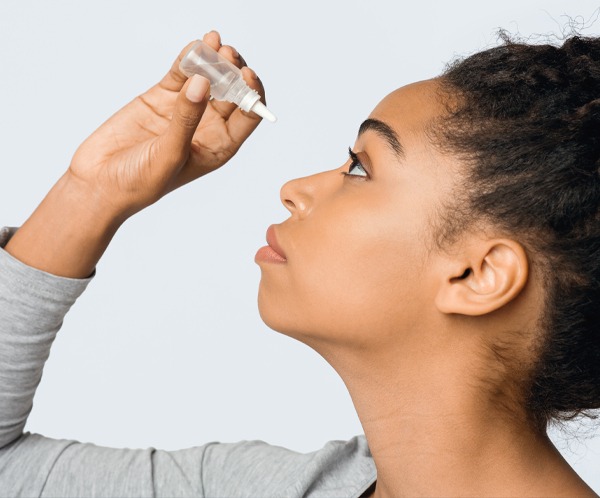Dry Eye Center
What is Dry Eye Syndrome?
Dry Eye Syndrome (DES), also known as Ocular Surface Disease (OSD), is the most common eye disorder, affecting up to 70% of some populations. It is caused when one or all of the components of the tear film are not in balance. Clogged oil glands along both upper and lower lid margins contribute to 86% of ocular surface disease progression (OSD) and dry eye. Poor lacrimal gland function further reduces the production of our “emergency eye wash tears.” Damage to our goblet cells that reside in the tissue near our beautiful iris can reduce the output of our mucous tears which help to nourish and protect our sight. Understanding the complex makeup of our tears is important in devising a proper treatment approach to solving OSD.
At Vision Source-Eye Center of the Triad, we have cutting edge diagnostic and treatment technology to assess and manage every level of OSD/dry eye.

What are the Symptoms?
The most common symptoms of Dry Eye Syndrome include:
- Blurred/Inconsistent vision with the need to blink to clear
- Redness
- Irritation
- Scratchiness
- Burning
- Watery eyes
Advanced dry eyes may damage the front surface of the eye and impair your vision. Depending on the severity of your symptoms, we have effective treatment solutions for OSD.
What are the Risk Factors?
Dry eyes can develop for many reasons, including:
- Age (a majority of people over age 65 experience symptoms of dry eyes)
- Gender (women are more likely to develop dry eyes due to hormonal changes caused by pregnancy, the use of contraceptives, and menopause)
- Medications (i.e., antihistamines, decongestants, blood pressure medications, and antidepressants can reduce tear production)
- Medical conditions (i.e., rheumatoid arthritis, diabetes, and thyroid problems are more likely to have symptoms of dry eyes)
- Environmental conditions (i.e., exposure to smoke, wind, and dry climates can increase tear evaporation and failure to blink regularly, such as during prolonged computer use can also contribute to drying of the eyes.
- Long-term use of contact lenses
- Refractive eye surgeries, such as LASIK, can decrease tear production
How is Dry Eye Treated?
We start with a full eye examination and carefully examine the ocular surface with specific diagnostic equipment to determine which areas of the tear film are in distress. Our Doctors will then formulate an initial treatment plan which may include:
Lid margin hygiene to encourage better oil gland production: Pure & Clean Hypochlorous spray, Zocushield gel
Nutrition: A high-quality omega-3 essential fatty acid can help relieve symptoms associated with OSD. We recommend DE3 by Physician Recommended Nutracueticals brand fish oil. Patients are also encouraged to drink ample water and limit caffeine consumption.
Possible prescription eye drop medication
TempSure Envi
Originally developed for cosmetic purposes but discovered to be an effective treatment for Meibomian Gland Dysfunction (MGD), which is the leading cause of Dry Eye Syndrome. When meibomian glands become clogged, they are unable to produce the oils that make up the top protective lipid layer of the tear film. By heating around the eye with radio-frequency (RF), blockages from the meibomian glands can be cleared allowing them to properly function once again. Call 336-271-2020 to schedule your free consultation with VSECT.
Low Level Light Therapy(LLLT) with Marco Equinox to reduce redness and vascular inflammation, increase meibomian gland performance and eradicate Demodex which can have a large impact on eyelid inflammation.
Amniotic membrane technology
Regener-Eyes biologic eye drop
Autologous serum eye drops
Or a combination of some of these strategies
If you suffer from dry eye or any of its associated symptoms, schedule an appointment at Vision Source-Eye Center of the Triad to meet with Dr. Koop and the rest of the Doctors and team at Vision Source Eye Center of the Triad.


